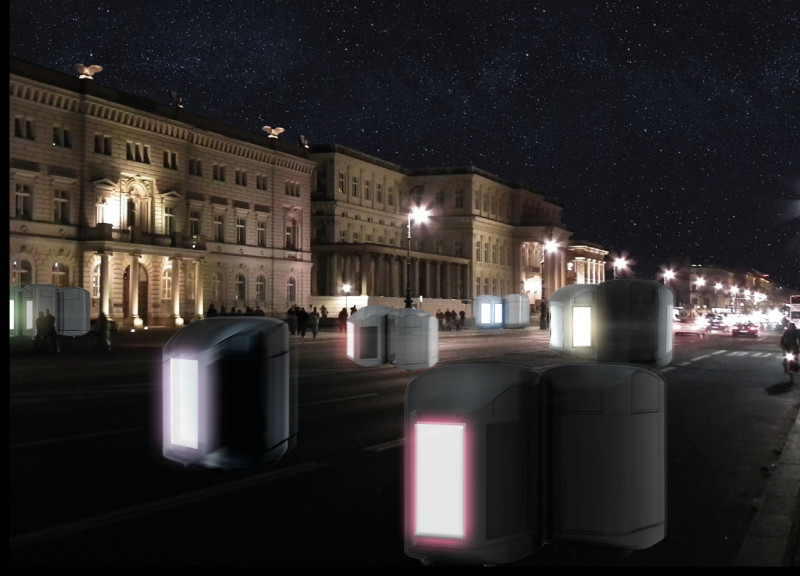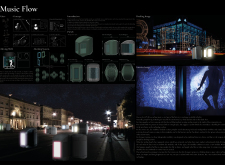5 key facts about this project
The "Music Flow" architectural project is designed as a series of movable pods that foster musical expression and social interaction within urban environments, specifically tailored for Berlin. Responding to the need for adaptable communal spaces in the context of the COVID-19 pandemic, the pods serve as platforms for both individual creativity and collective engagement. Each unit effectively integrates auditory and spatial design elements that allow users to experience music through physical movement and interaction.
Unique Architectural Features
The "Music Flow" project distinguishes itself through its modular design, enabling flexibility in configuration and use. Each pod can be repositioned or clustered based on user activity, making it suitable for various performances, rehearsals, or social gatherings. This adaptability is crucial in meeting the evolving needs of urban spaces. The architecture employs a combination of materials including steel for structural integrity, concrete for foundational support, and polycarbonate panels for lightweight, transparent surfacing that invites natural light while promoting acoustic properties.
Innovative use of interactive elements marks another significant feature of this project. Embedded acoustic panels enhance sound quality within each pod, encouraging immersive musical experiences. The flexible wall systems allow for the modification of interior spaces, accommodating different group sizes and musical arrangements. These elements work in concert to create an engaging environment tailored to the needs of diverse users, from solo performers to larger groups.
Sustainability and User Experience
The project's design approach also emphasizes sustainability by utilizing renewable materials and energy sources, aligning with contemporary environmental considerations. Natural ventilation and lighting reduce reliance on artificial systems, while the overall layout is optimized for passive heating and cooling.
User experience remains at the forefront of the design, encouraging interaction and collaboration through its physical layout and accessibility. The vibrant interplay between individual creativity and group dynamics creates a unique atmosphere conducive to artistic exploration. This project seeks to redefine public spaces in urban settings, making a substantial contribution to architectural dialogue regarding community and creativity.
For further analysis of the architectural plans and sections, as well as deeper insights into the design ideas and functionality of "Music Flow," readers are encouraged to explore the project presentation for an in-depth understanding of its architectural significance.




















